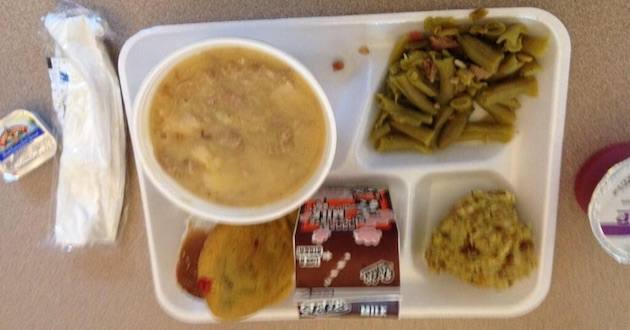One of the Obama administration’s most unpopular policies was its meddling in the school lunch menus of millions of students.
While Michelle Obama’s goals of improved nutrition were laudable, schools found it intrusive, expensive and difficult to implement while students hated it. The result was millions of additional pounds of wasted food each year, increased costs for schools and student athletes not able to meet their increased calorie needs.
So hated were the new rules, students across the nation took to social media to post photos of unappetizing food trays (see video below).
On her birthday Friday, the former first lady got news that wasn’t wrapped in a bow. The U.S. Department of Agriculture (USDA) took her rules off the menu, so to speak, and announced two proposals to roll back many of her school meal standards.
When Obama’s standards were implemented, students posted photos to social media:
#ThanksMichelleObama pic.twitter.com/lNo2WshiXM
— Garrett Freeman (@garrettfreeman4) September 29, 2014
The new, more attainable standards, according to Agriculture Secretary Sonny Perdue, are designed to give local schools and foodservice operators more flexibility “because they know their children best.”
Student documents real effects of Obama policy:
“Schools and school districts continue to tell us that there is still too much food waste and that more common-sense flexibility is needed to provide students nutritious and appetizing meals,” Perdue said in a press release. “We listened, and now we’re getting to work.”
The school nutrition standards advocated by Michelle Obama and signed into law by her husband have long been a source of controversy. Studies have shown that the new rules had little impact on childrens’ health, other than them arriving home hungry at the end of the day.
Shortly after taking office, Perdue pledged to ax those standards that aimed to combat childhood obesity by serving more whole grains, fruits, and vegetables. He argued that they have led to schoolchildren simply not eating the meals.
“If kids aren’t eating the food, and it’s ending up in the trash, they aren’t getting any nutrition—thus undermining the intent of the program,” Perdue said in a 2017 statement.
Under USDA’s proposed rule, schools would be given more freedom to adjust the amount of fruit and veggies in the meals. It would also be made easier for schools to offer meats and meat alternates.
The USDA proposes another rule regarding the Summer Food Service Program (SFSP), which serves more than 2.6 million children during the summer months when they are at higher risk of poor nutrition because they do not have access to school meals. The rule also emphasizes giving foodservice operators more control over what and when they serve. High-performing, experienced operators would find it easier to participate in the summer feeding program, with reduced paperwork and a streamlined application process.
Perdue’s latest move to unwind Obama-era nutrition standards comes almost two years after he restored local control of guidelines on whole grains, sodium, and milk in school meals. Schools are also allowed to serve non-wholegrain rich products occasionally, as well as flavored, low-fat milk permanently.
–Metro Voice and wire services









